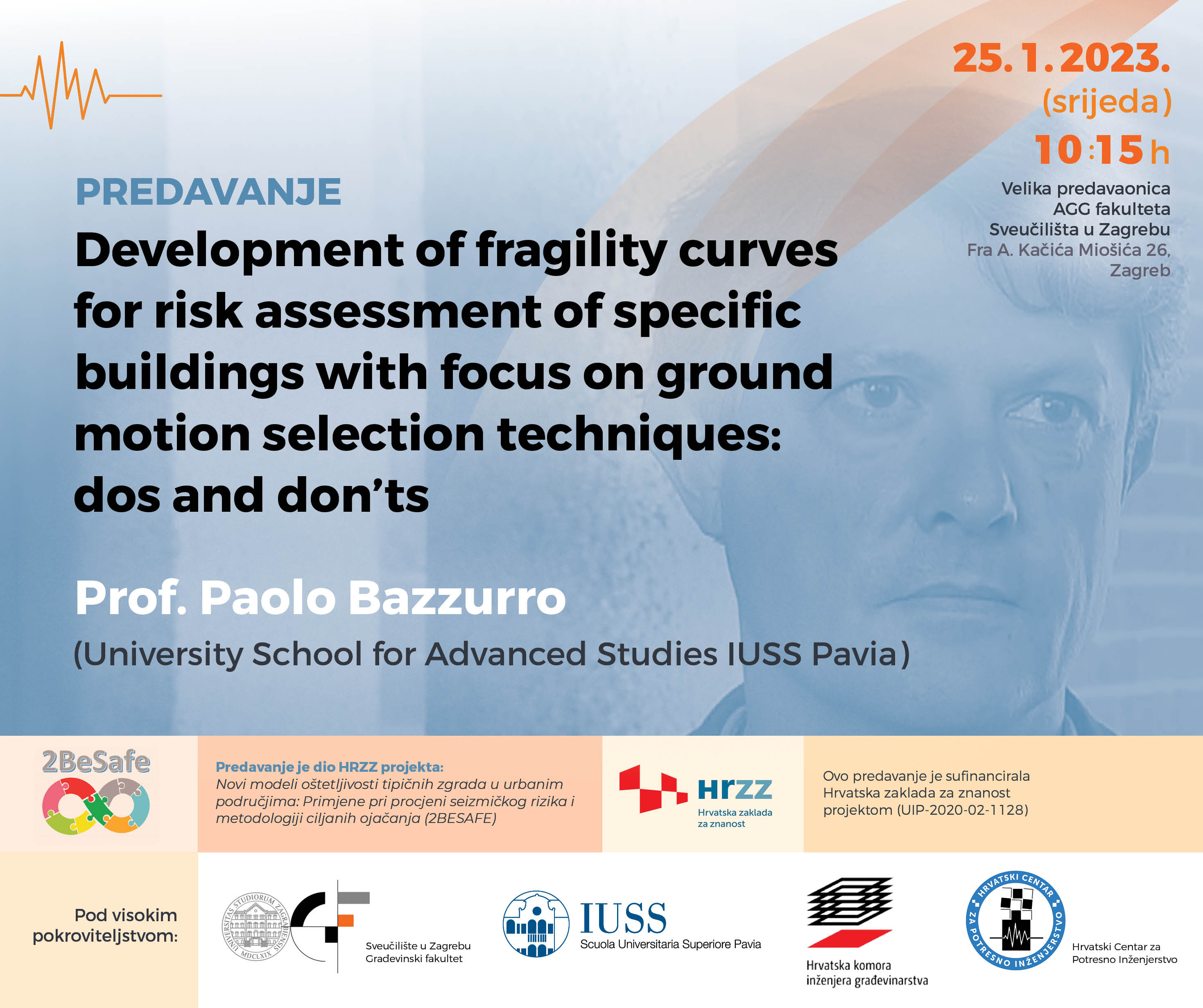Development of fragility curves for risk assessment of specific buildings with focus on ground motion selection techniques: dos and don'ts.
Predavanje će se održati 25. siječnja 2023. u 10:15 sati u Velikoj predavaonici, Kačićeva 26.
Predavanje će se držati uživo i na daljinu: https://2besafe.grad.hr/lecture-of-prof-paolo-bazzurro/.
Predavanje je dio HRZZ projekta: Novi modeli oštetljivosti tipičnih zgrada u urbanim područjima: Primjene pri procjeni seizmičkog rizika i metodologiji ciljanih ojačanja (2BESAFE)
Ovo predavanje je sufinancirala Hrvatska zaklada za znanost projektom (UIP-2020-02-1128)
Sažetak
The concept of fragility curves has been first introduced in the 80's for expressing a relationship between the intensity of earthquake ground motion experienced by a structure and the probability that the structure will end up in a certain limit state (say, serviceability or ultimate) or worse at the end of the shaking. Fragility curves have been widely used since. Regardless of the application, in the great majority of cases fragility curves are analytically developed by applying suites of ground motions to a finite element model of the structure under consideration. The reaching (or exceeding) the limit state is gauged on the basis of the severity of the structural demand induced. Several are the methodologies proposed in the engineering seismology community for conducting the battery of response analyses needed. However, no matter what the methodology is, the fragility curves are heavily dependent on the ground motions selected. A careless ground motion selection generates an unfit for purpose fragility curve. Until recently, however, this dependency has not been widely recognized and, as a consequence, not enough attention has been given to the ground motion selection technique adopted. This lecture will touch upon some of the ground motion selection techniques available and will discuss the pros and cons of each. The concepts discussed here are tailored for the development of fragility curves for risk assessment of specific buildings at given locations but they are also applicable to the design of new buildings.
Biografija
Paolo Bazzurro is an engineering professor at the University School for Advanced Studies IUSS Pavia and partner of the catastrophe Risk Modeling Company RED in Pavia. He earned his M.S., Engineer Degree, and Ph.D. in Civil Engineering at Stanford University. Before joining IUSS, he gained more than 25 years of professional experience in Europe and United States dealing with risk assessment of monetary losses caused by natural events for corporate clients, insurance companies, brokers, governments and other institutions, such as the World Bank. He was the Deputy Chair of the Global Earthquake Model (GEM) Scientific Board, a member of the National Great Risks Committee and of the Italian Seismic Hazard Maps review committee both appointed by the Italian Prime Minister office. He authored about 200 refereed publications in different engineering areas.
